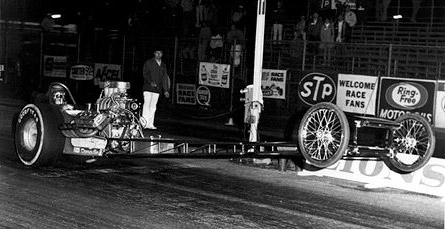|
What turned out to be John Wiebe's
last front engine dragster began its life under the Creitz &
Donovan banner. In 1971 Ed Donovan had Don Long build this unusual
car to try a theory. Soon dubbed the "Violin Car" -
another of Donovan's appellations, the name came about as an
off-shoot of the unusual layout of the car. It was short, wide,
had smaller pipe (albeit more of it), and the engine was out
some 40"... unheard of at the time. Donovan subscribed to
the theory of sympathetic resonance. Simply put, if two violin
strings are "tuned" to the same tension or resonance,
and the bow is drawn across one, the other would vibrate "in
sympathy". Tune them differently, only the excited string
will vibrate.
Early on it had a shorty body
as seen in its first outing at Lions with Benny Osborn in the
seat (above) and another in Tulsa with Butch Maas driving. After
initial testing it was fitted with a full Tom Jobe mag body.
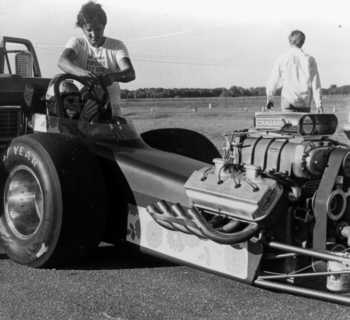
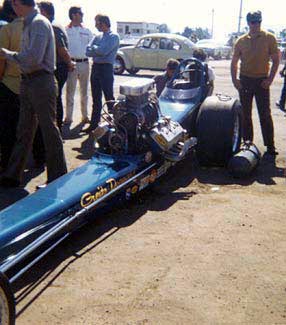
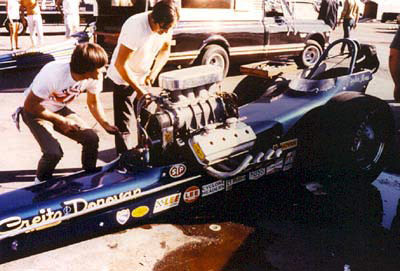
During its stint under Creitz's
care, the "Violin Car" proved to be a good idea , but
a failure as a race car... she was a tire shaker deluxe. Jobe
had done the body and fashioned a Cheetah head on the front of
the nose. In late 1971 the car was handed off to Wiebe to try
and he promptly cut the Cheetah nose off (out of fear it would
be damaged) and replaced it with the nose it has now.
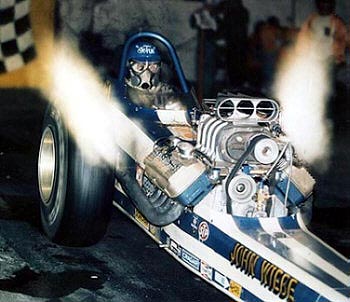
Part of the deal that came with
the car was it would be the test bed for the brand new Donovan
417 aluminum hemi. Based on the tried and true Chrysler 392 the
new engine had its initial problems but nothing that couldn't
be cured. The block used in Wiebe's car was serial # 002 - the
second block ever cast. This fact becomes very important later
in this story (see below) and needless to say, makes this a very
historical car.
An Email from John Wiebe to Don
Love on 02-07-06: "I did run the 002 block in my car but
unless I have really lost it this is the way it was.. The 001
block was not finally machined until I think the Wed before the
race at Ontario. When I slipped a crank and etc in the block
the rods hit the cylinder walls. Since they did not want to R&R
the cylinders I ground notches in the cylinders to relieve this
problem. This was an all night job and the next day we finished
installing the block in the car and finished the plumbing etc.
It was about 11:30 , Thursday night when I was ready to rattle
the thing. I asked Ed to do the honors on the ignition toggle
(only fitting) and we spun it gassed it and he did his thing
and it sounded GOOD. A lot of smiles were exchanged. The next
day we qualified low and then I really zoned out in the final
and got too much heat, smoked the tires and lost Why I am telling
you all this is this was the 001 motor. If I also recall correctly
this is the same block I ran at Lions when we had the matching
6.17 race with the snake. Then Donovan kinda got sentimental
and said he would trade me the 002 block for the 001 as he wanted
it. This transpired and sometime later when I went to the 426
block and pissed Donovan off Garlits took advantage of the situation
(imagine that) and talked Ed out of the block as part of some
deal for his museum.
I am really pleased you found
the 002. I don't remember who I sold it to. I don't think it
had any "windows" it it but know it was soon superseded
with different type cylinders and other minor girdle changes.
This block should have some monetary value, not because I ran
it but because of the number and I think it has found an appropriate
home. Thanks for the great job you have done and for always keeping
me posted on activities. I look forward to meeting you some time
and tell Herm hello and that he owes me dinner at "Tony's"
on the pier. What is that crazy Ruth doing?
John Wiebe
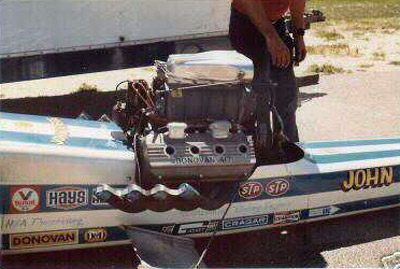
In 1972, when most everybody
else was putting the engine behind them, Wiebe added the canard
wings and tried to stay competitive. Although he ultimately had
better luck with it than Creitz did, Wiebe gave in and in late
1972 ordered a rear engine car. The now infamous "Violin
Car" was sold into bracket racing hell.
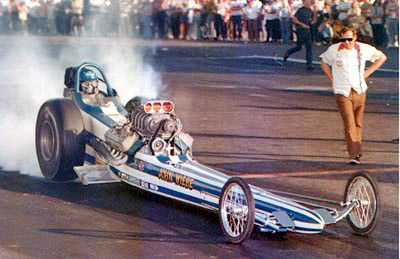
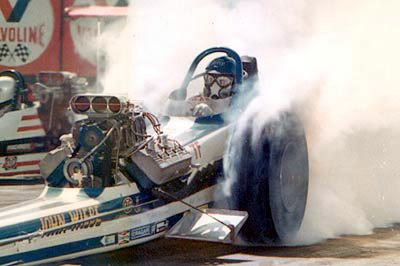
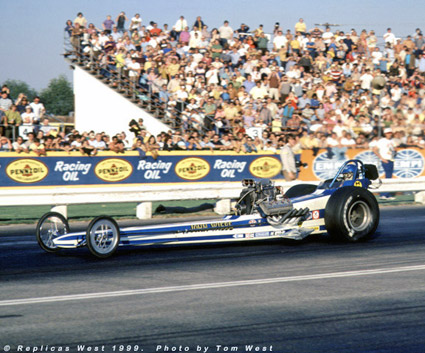


Fast forward to 2003 when Washington
resident Don Love found the car in Canada and made arrangements
to buy it. At the time he did not know the cars history but just
a little research gave him the answer... in the scope of drag
racing history this was a huge find.
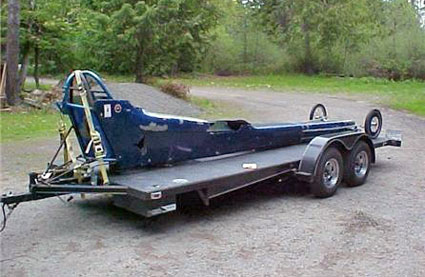
These first pictures were taken
at Jim Wright's shop the day Don brought it back from Canada.
Wright had no idea what it was going to end up becoming. Don
had asked if Jim wanted to do the paint work. Wright wasn't thinking
much more than just another restoration and paint work at that
time.
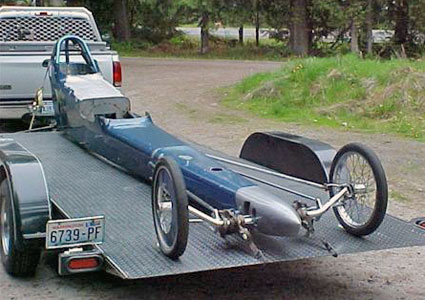 All things considered,
the car was not in horrible shape.
All things considered,
the car was not in horrible shape.
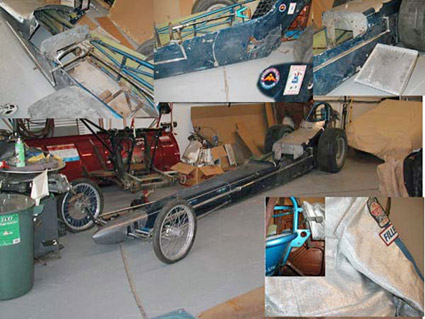
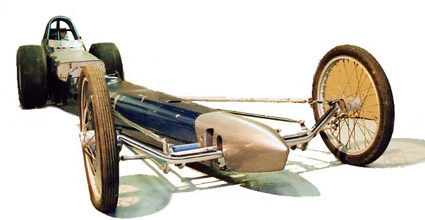
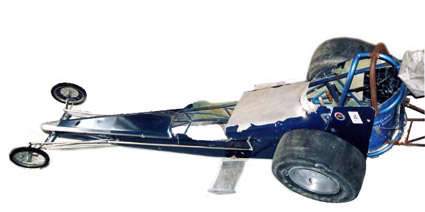
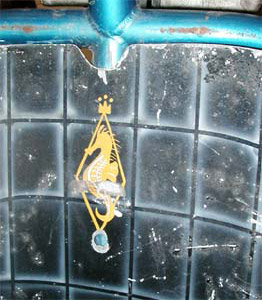
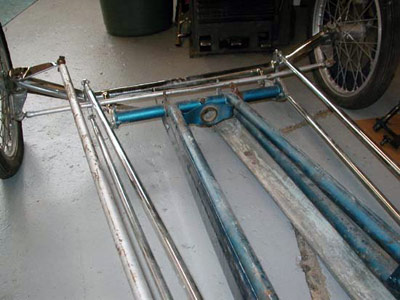
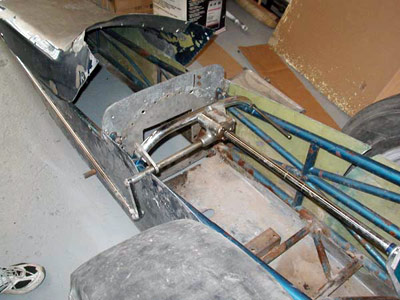
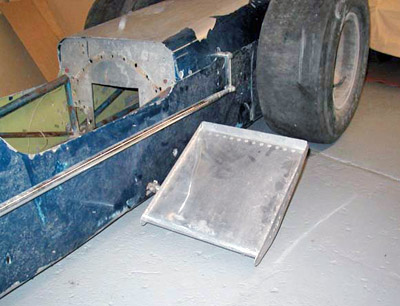
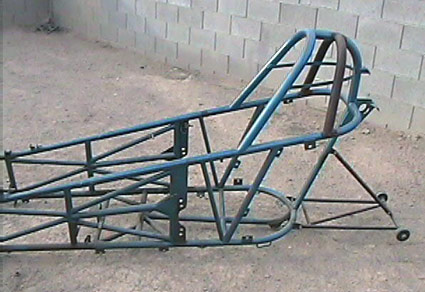
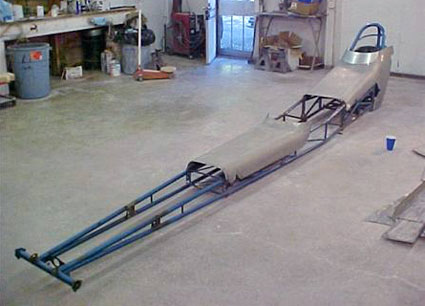
This was the first stage of fitting
the pieces. The old paint, on the chassis and body, was really
tough to sand and strip off. Don spent a lot of time on it before
Wright got it and finished up removing all the left over primer.
Seemed to be some kind of zinc primer that paint remover wouldn't
touch. Wright ended up sanding most of it off. The body panels
are made of Magnesium and prior to this he had never tried to
move, bend or straighten this type of metal..
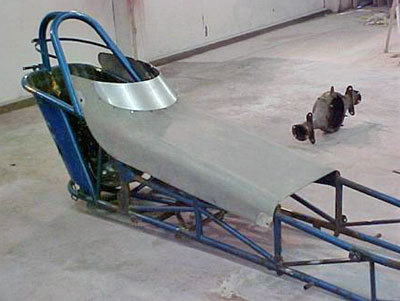
Wright was glad Love had taken
the car apart. He brought it to the shop in pieces and Jim had
no idea of how it went together. The plexiglass windshield was
gone so Don made a polished wrap around aluminum windscreen.
The first stage of the resto was to do the body panels. The frame
was last.
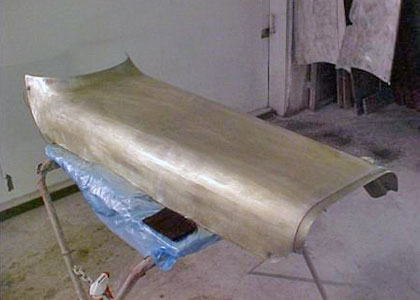
This shows the fully sanded and
chemical treated cowl ready for PPG's DP Epoxy primer. The next
few photos are of the same progress, but different parts.
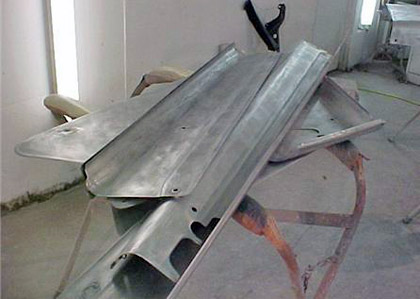
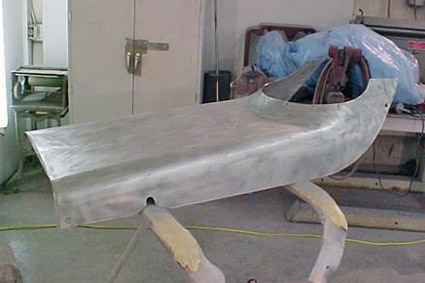
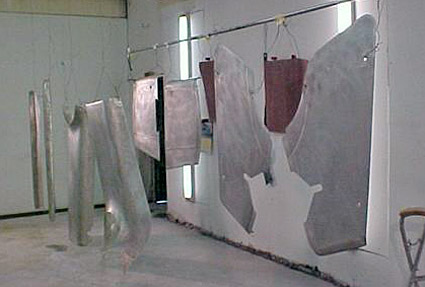
One of the things Wright always
enjoyed is to figure out how to hang all the parts. When he paints
a 40 Ford for instance, he hangs and paints the whole car, inside
and out at the same time. No paint lines that way.
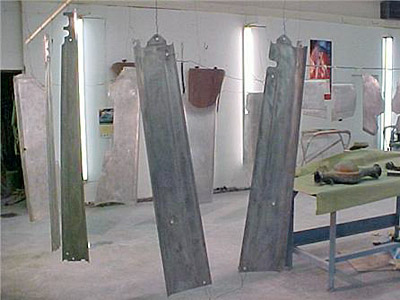

One of Wright's motorcycle club
friends, Tom Hines, is also a custom painter. Jim had taken this
close up of the seat pan. They wanted to have Tom copy the old
Tony Nancy logo. Tom airbrushed the seat pan back to it's original
look.
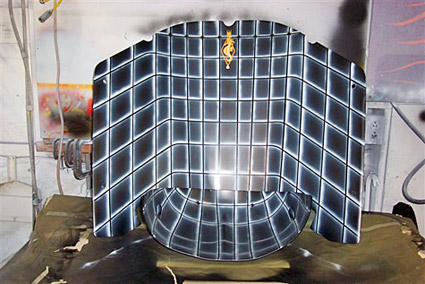
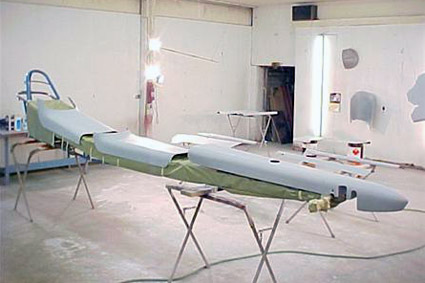
These next shots are of the painting
process. Wright used the frame for a table to paint some of the
panels. This showing the body wet sanded... ready for sealer
and base coat.
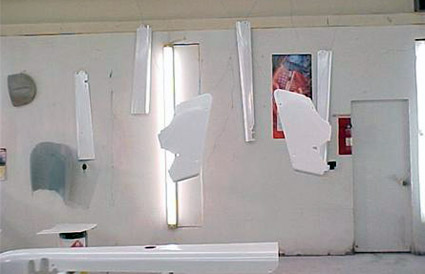
Wright asked the local PPG shop
to come up with a striking white pearl that also had a clean
white crystal sparkle to it. They did an excellent job. These
parts are done with the pearl white base coat.
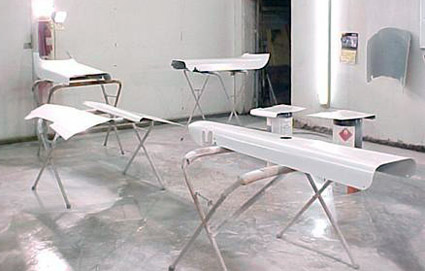
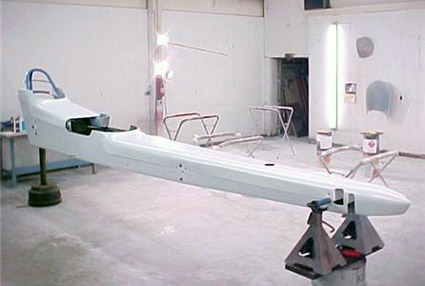
After Don and Jim carefully put
the panels together. Still just the white base coat. No clear
yet as Wright had to mask it for the blue stripes. He used a
lot of tape for sure.
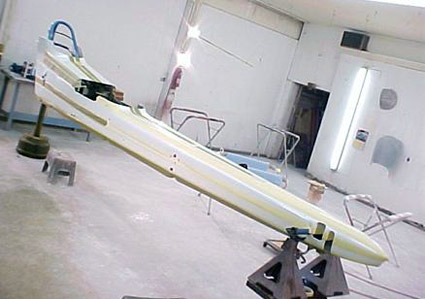
They did a lot of looking and
figuring out where to put the blue lines. Luckily they had some
pictures of the car from 1971. This is the start of the masking
for the stripes.
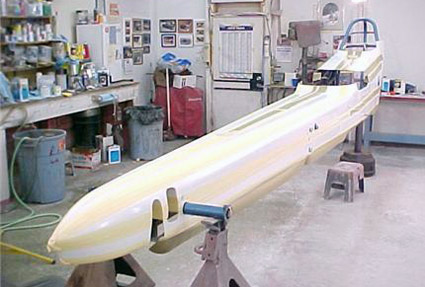
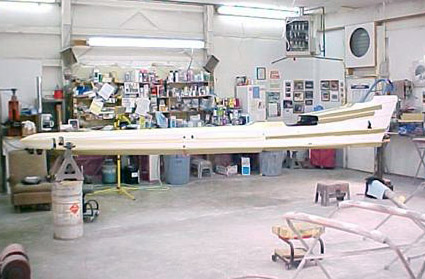
This shot is kind of cool. It
shows the " Violin" frame sag, as it is suspended from
both ends.
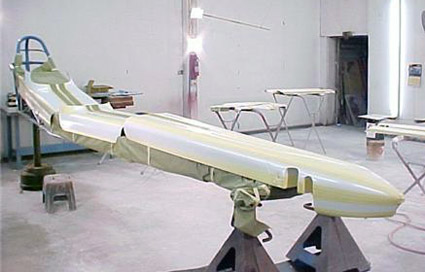
Wright had to "break"
apart all the panels then tape where the overlap had hidden the
base white. It makes a more complete job to not stop the lines
at a seam joint. These are ready for the blue. Don had found
the original blue color and Jim had the PPG rep convert it to
the new and current base coat system. Todays paints use a totally
different system to obtain sparkle and the " Metallic"
look.
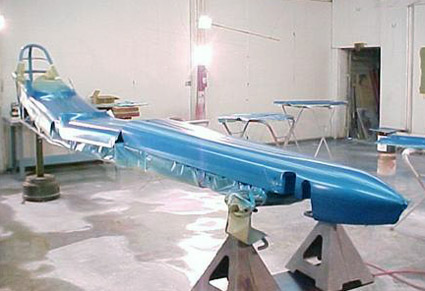
After spraying the blue base
coat Wright had to carefully peel all the masking tape from the
white before clear coating it.
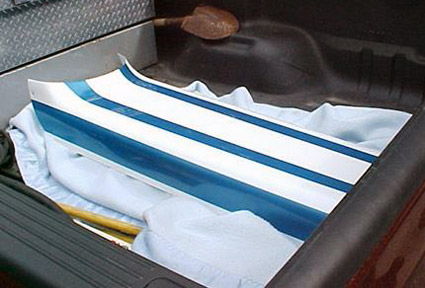
The finished body parts. They
all went one by one, very carefully, to Don's shop by pickup.
It was the frames turn next...........
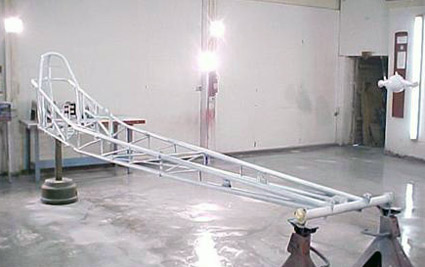 The chassis is primed,
sanded and ready for the matching blue paint.
The chassis is primed,
sanded and ready for the matching blue paint.
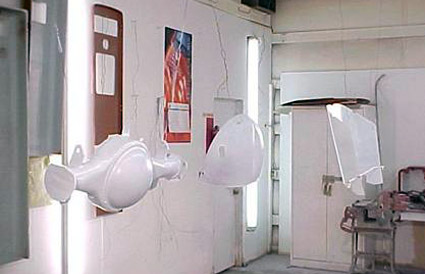
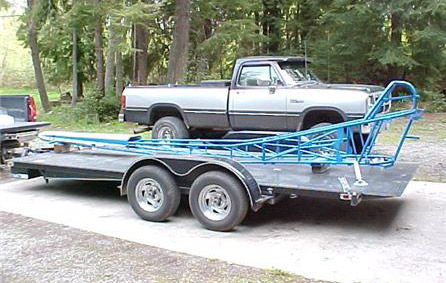 These last two shots
from Wright are the finished frame ready for assembly.
These last two shots
from Wright are the finished frame ready for assembly.
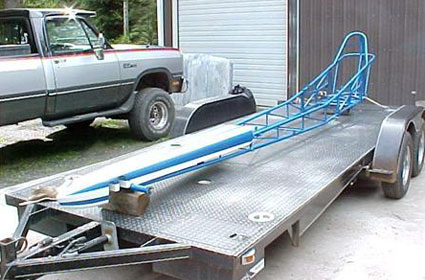

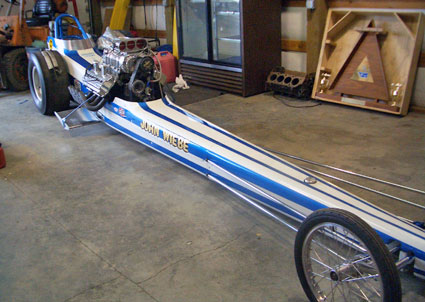 The car was finished
in the summer of 2004.
The car was finished
in the summer of 2004.
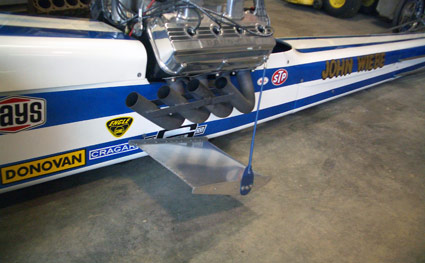
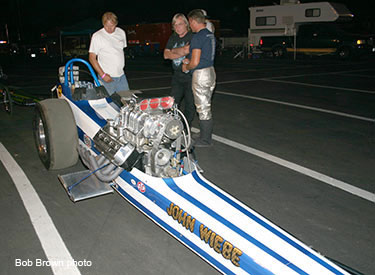
Fitted with a cast iron 392 and
Powerglide transmission, the car made its Cacklefest debut at
CHRR XIII with Chris Davis was in the seat.
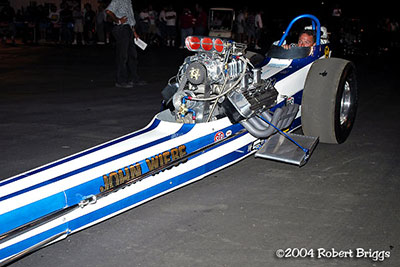
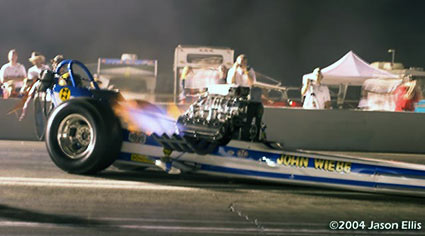
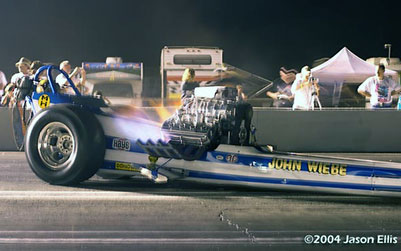
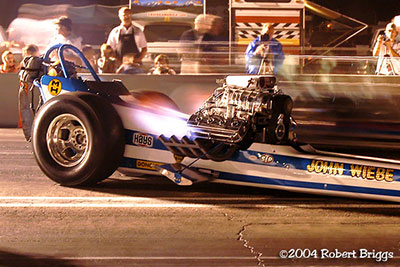
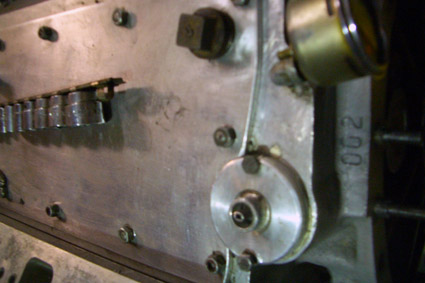
Love and gang passed on the 2005
CHRR to concentrate on making the car "right"... and
they did it in spades. Remember the Donovan 417 Wiebe tested
in 1972? Block #002? Well, incredibly the very block that survived
months of R&D was found, like the car, in Canada. Needless
to say this was an unbelievable score and would made the car
as real a deal as you can get.

Lynn Burch and Don Love flank
Donovan engine wizard Herm Peterson. When it was learned that
the car would have the original block in it John Wiebe gave the
car his blessings and agreed to be in the seat for Cacklefest
VI.
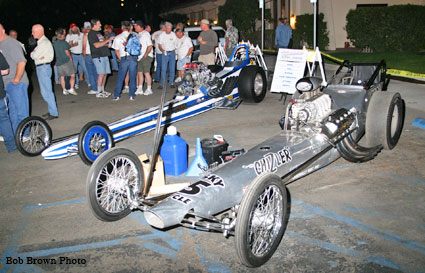
As is customary, the 2006 Cacklefest
officially kicks off amid the Honorees Ceremony at the Double
Tree Hotel. This year there were four featured cars staged to
do post award fire-ups in the parking lot. Getting the honors
were the Chizler restored by Ron Johnson, John Wiebe's "Violin
Car" restored by Don Love and Lynn Bruch, Roland Lelong's
"Hawaiian" restored by Ted Guth and the Marv Eldridge
L.A. Challenger.
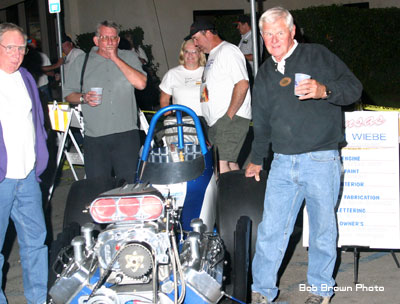 "Kansas John"
Wiebe
"Kansas John"
Wiebe
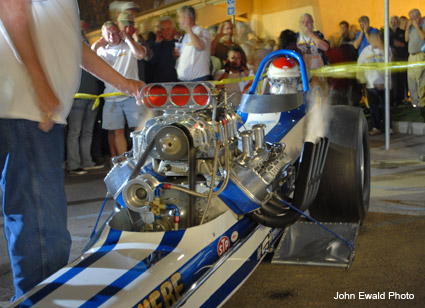 Wiebe sits in his old
car for the first time in 34 years.
Wiebe sits in his old
car for the first time in 34 years.
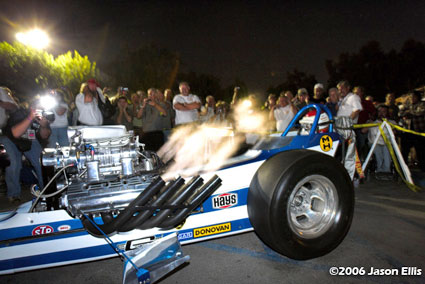
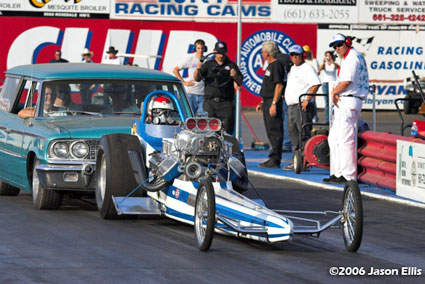 On Saturday Wiebe had
to do a manditory pre Cacklefest test push start.
On Saturday Wiebe had
to do a manditory pre Cacklefest test push start.
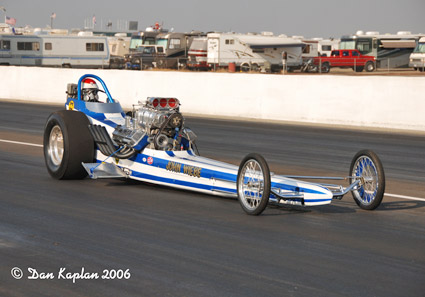
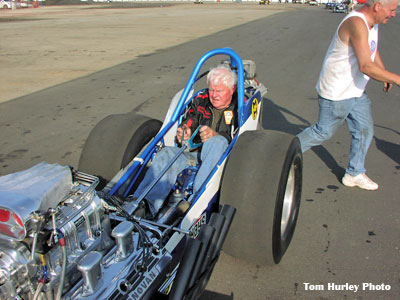 All went perfectly.
All went perfectly.
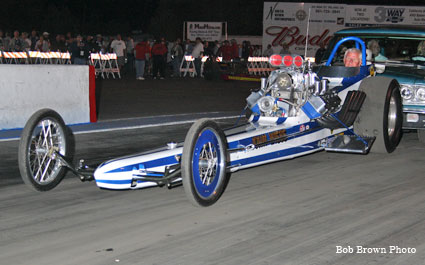 The Main Event - Cacklefest
VI started with the parade of cars and drivers.
The Main Event - Cacklefest
VI started with the parade of cars and drivers.
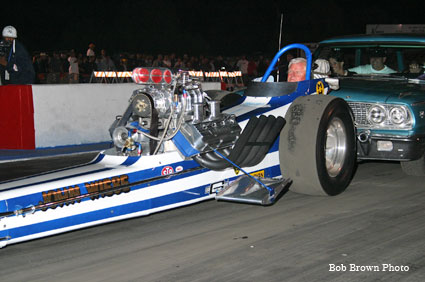
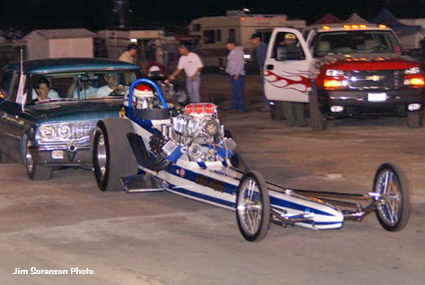 John begins his push
start from the top end.
John begins his push
start from the top end.
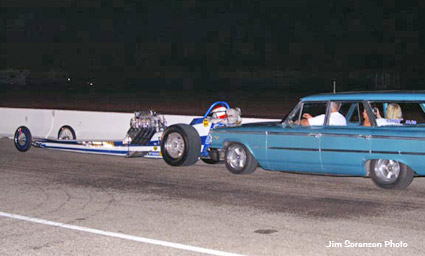
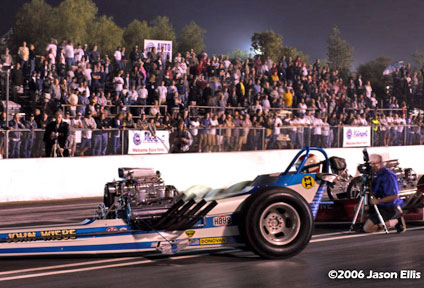 John Wiebe at his spot
on the track with #002 hitting on all eight.
John Wiebe at his spot
on the track with #002 hitting on all eight.
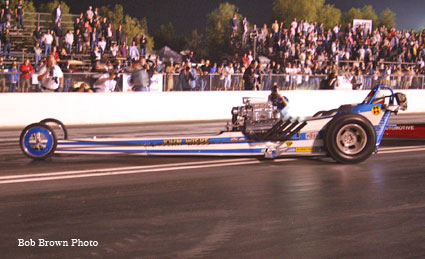
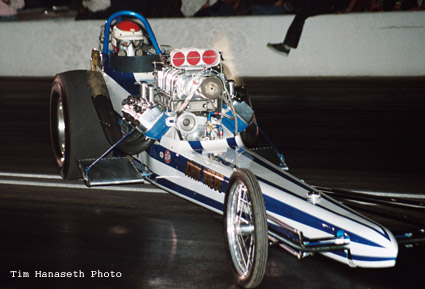
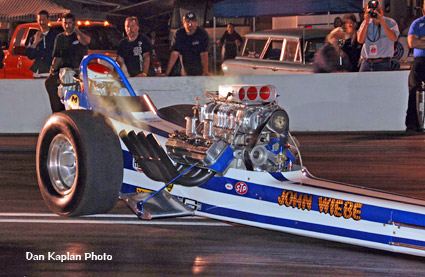 Look for this beauty
at future cacklecar events including the 2007 CHRR.
Look for this beauty
at future cacklecar events including the 2007 CHRR. |

